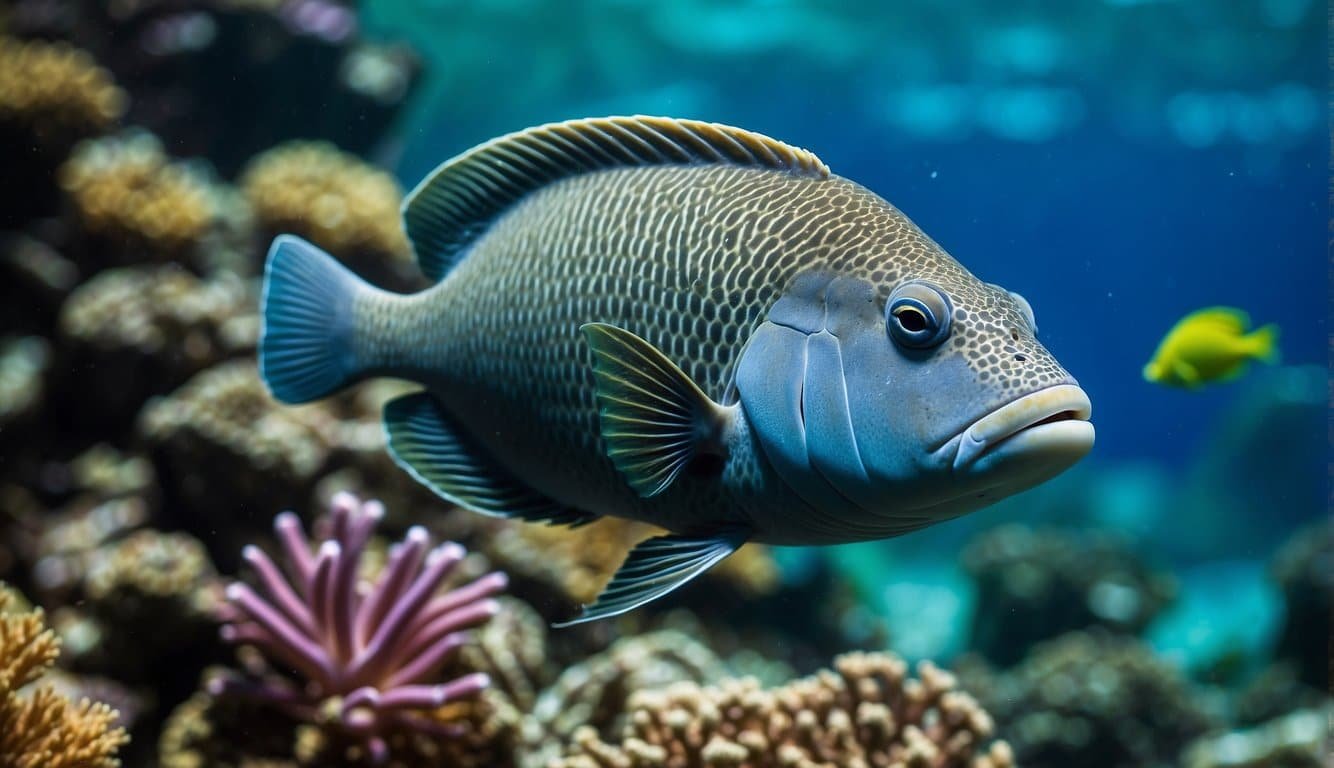Introduction to Napoleon Wrasse
The Napoleon wrasse, also known as the humphead wrasse, is as striking as it is rare. Admired for its vibrant hues and prominent features, it plays a crucial role in its marine ecosystem.
Physical Description
The Napoleon wrasse is known for its thick lips, large size, and distinctive hump on the forehead as adults. Males typically display more vibrant coloring than females, showcasing various shades of blue, green, and purple. The fish can grow up to 2 meters in length and weigh as much as 190kg, though sizes vary significantly across their range.
Habitat and Range
This fish prefers the steep outer reef slopes and lagoon reefs of the Indo-Pacific region. Encountered mostly in coral reef environments, the Napoleon wrasse can be found at depths of up to 100 meters, though they are often spotted around 15 meters deep during the day. Despite their impressive size, tracking these fish proves challenging, yet vital, to assess their conservation status and implement effective protection measures.
Conservation Status

The Napoleon wrasse, with its vibrant colors and impressive size, faces significant threats to its survival. As its precarious position on the conservation radar worsens, definitive action is critical to ensure its future.
Threats to Survival
The International Union for Conservation of Nature (IUCN) lists the Napoleon wrasse as endangered, primarily due to overfishing and habitat loss. These fish are often targeted by fishermen for their high market value. Habitat loss, particularly the degradation of coral reefs, further exacerbates the risk, as these are essential to the Napoleon wrasse’s life cycle.
Efforts and Measures
Conservation efforts are in force, with the Napoleon wrasse receiving protection under CITES (the Convention on International Trade in Endangered Species of Wild Fauna and Flora), aiming to regulate and ensure sustainable trade. On a local scale, certain areas have implemented marine protected zones where fishing these magnificent marine fish is restricted or prohibited, helping to curb overfishing and preserve their natural habitats.
Life Cycle and Behavior

The Napoleon wrasse, also known as the humphead wrasse, is a large and vibrant resident of coral reefs. With a lifespan reaching up to 30 years, these fish are a long-lived species. They start their journey as tiny eggs in the open water, relying on the currents to carry them to safety.
As juveniles, they hide among mangroves and reef crevices, mastering the art of camouflage to evade predators. Remarkably, all Napoleon wrasses are born female. They exhibit protogynous hermaphroditism, meaning that some females will change to males as they mature, which generally happens when they reach a certain age or size.
Upon reaching sexual maturity, the behavior of the wrasse shifts. Mature adults tend to be solitary or found in pairs and are often sighted swimming in a leisurely manner over the reefs. They have a diverse diet but primarily enjoy feasting on mollusks, reef fish, and crustaceans. Their thick lips and strong teeth enable them to crack open hard-shelled prey with ease.
- Age: Up to 30 years
- Size: Can grow more than 6 feet in length
- Diet: Includes mollusks, reef fish, crustaceans
- Reproduction: Protogynous hermaphroditism, changing from female to male
Spawning occurs during specific moon phases, where mature wrasses gather in groups, a behavior which helps to ensure the success of their larvae. These gatherings are spectacular, with the larger, bright blue males showing off their colors to attract mates. Protection of these aggregation sites is crucial for the conservation of the species, as highlighted in research on their ecology and spawning aggregations.
Understanding the life cycle and behavior of the Napoleon wrasse is essential for their protection, given their vulnerable status. Efforts to manage and conserve these magnificent reef dwellers are ongoing, safeguarding the future of both the species and the reef ecosystems they inhabit.

